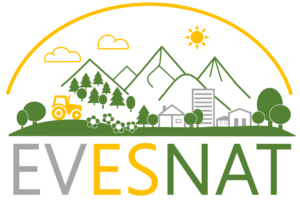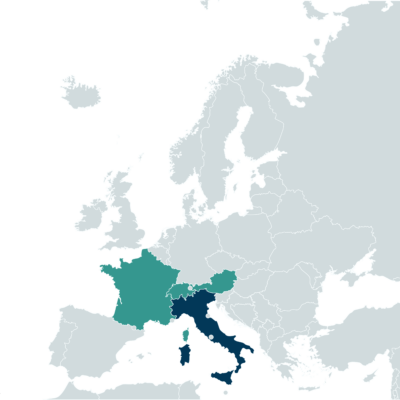
EVESNAT – Nature-based Solutions to meet EU Nature Restoration Targets: Evaluating synergies and trade-offs across Ecosystem Services for biodiversity conservation, climate change mitigation, and resilience and autonomy improvement
Call
Duration
01/01/2025 – 31/12/2027
Total grant
Approx. 1.2 mil. €
More information
Uta Schirpke
uta.schirpke@eurac.edu
Partners of the project
- Institute for Alpine Environment, Eurac Research, Bozen/Bolzano, Italy
- Institute of Environmental Geosciences, French National Research Institute for Sustainable
- Development, Saint-Martin-d’Hères, France
- Department of Ecology, University of Innsbruck, Innsbruck, Austria
- Planning of Landscape and Urban Systems, ETH Zürich, Zürich, Switzerland
- Grenoble Alpes Metropole, Grenoble, France

Context
The new EU Nature Restoration Law requires Member States to restore at least 20% of EU land and sea by 2030, and all ecosystems in need of restoration by 2050. Member States need to develop National Restoration Plans and solutions to restore habitats and species, improve biodiversity in different ecosystems, and halt the decline of urban green spaces. However, it is unclear how Member States can successfully achieve these targets. NbS are a promising way to address these challenges, as NbS can promote the creation, restoration, and enhancement of ecosystems, supporting biodiversity conservation and the provision of ecosystem services. Nevertheless, the ability of NbS to co-generate benefits for human well-being is still unclear.
Main objectives
EVESNAT aims to evaluate the role of NbS in supporting biodiversity and human well-being under the new EU Nature Restoration Law. Specifically, it will evaluate three different spatially explicit scenarios of NbS that will be co-created with local stakeholders through a quantitative assessment of multiple ecosystem services and biodiversity.
Main activities
The main activities of EVESNAT will be:
(1) conceptualize a roadmap for adopting a transdisciplinary and transnational approach to develop NbS in the context of the EU Nature Restoration Law;
(2) develop three spatially explicit scenarios of NbS (increasing biodiversity, mitigating climate change, improving resilience and autonomy) adopting a participatory approach;
(3) assess multiple ecosystem services in biophysical and economic terms, as well as their importance through socio-cultural evaluation, and estimate potential impacts and benefits of the NbS scenarios;
(4) identify synergies and trade-offs among ecosystem services across the NbS scenarios and evaluate the effectiveness of NbS with regard to the different targets of the EU Nature Restoration Law; and
(5) elaborate general guidelines to develop and implement NbS for the EU Nature Restoration Law.
Focusing on three case study sites in the European Alps with differing social-ecological characteristics, the findings of the project EVESNAT will contribute to an improved management and governance supporting the targets of the Nature Restoration Law. EVESNAT will provide a knowledge base with general guidelines and concrete examples of NbS supporting biodiversity conservation and assuring the provision of multiple ecosystem services.

